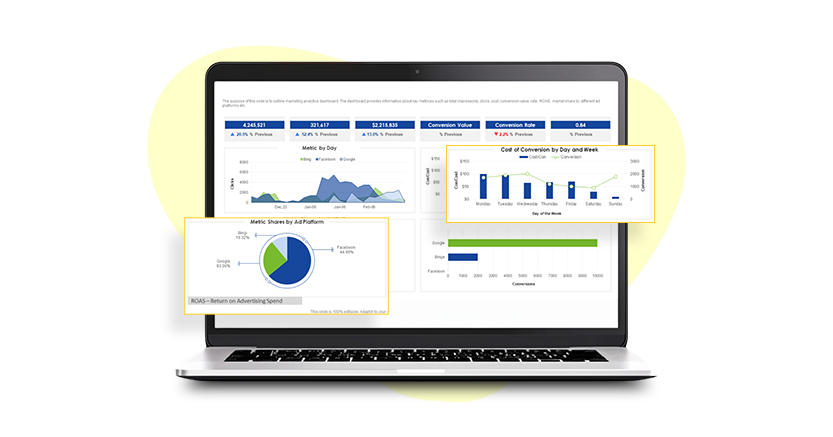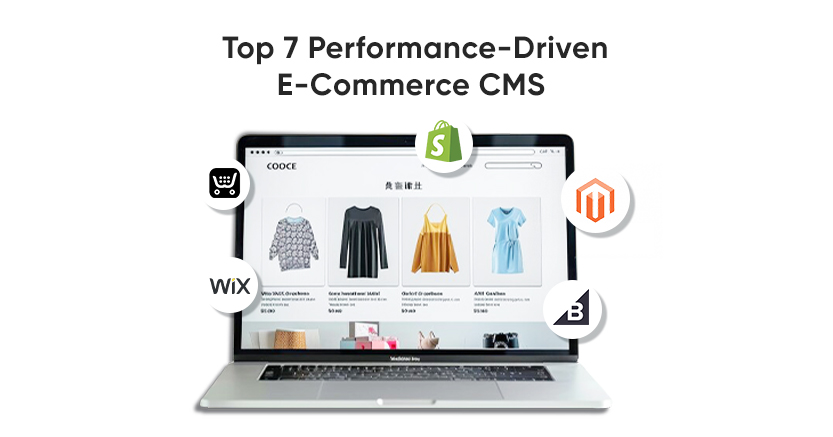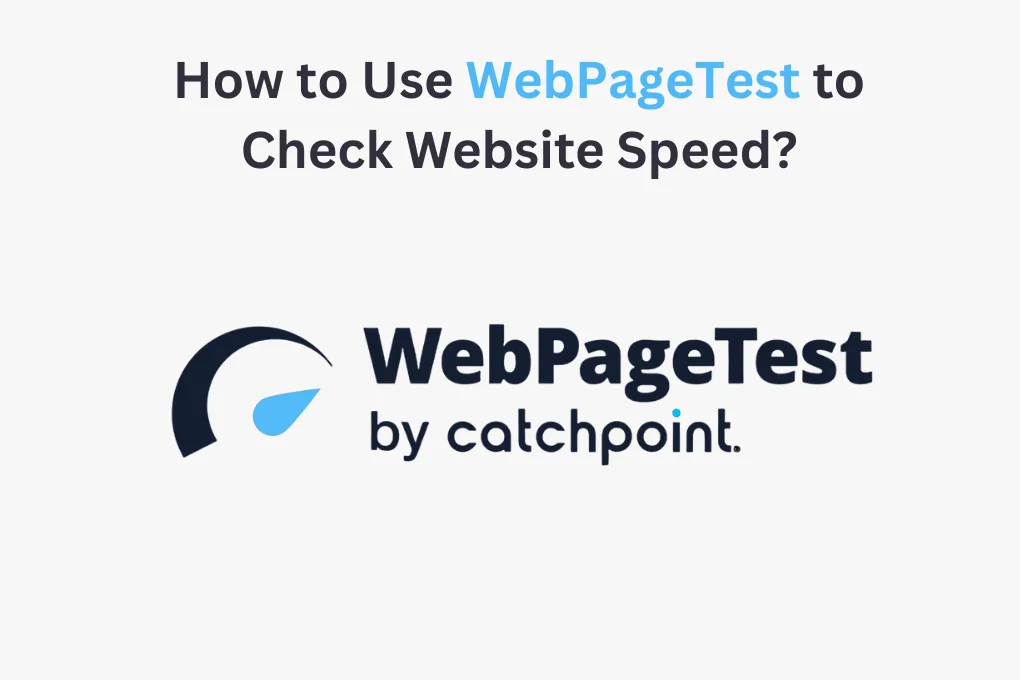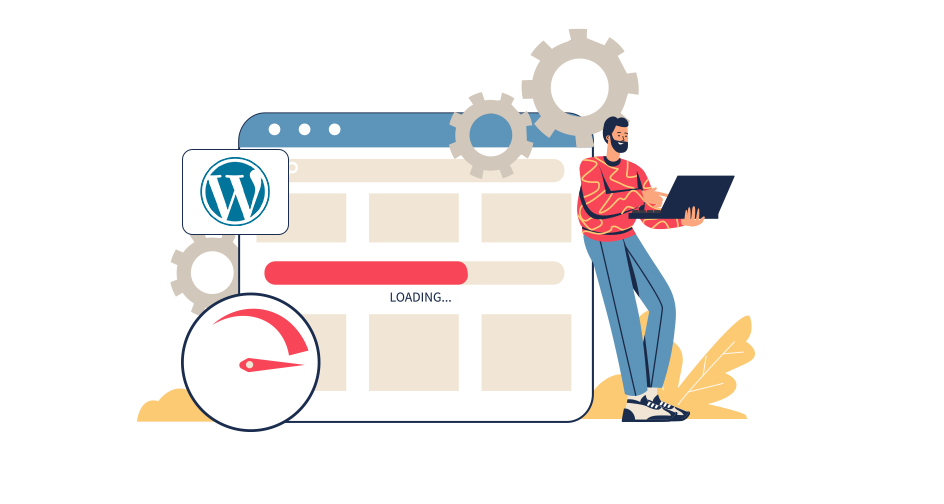Introduction
In the competitive digital age, where every millisecond counts, the speed of your website can make or break your business. Imagine a potential customer lands on your site, eager to explore what you offer. But your website has sluggish load times and frustrating delays.
In that case, the visitors’ interest quickly weakens, and they will bounce away to your competitor’s faster and more responsive website. A recent research also shows that even a one-second delay in page load time can significantly impact your business’ conversion rates and revenue.
In this blog, we will look into the critical relationship between website speed and your profit margins to help you improve conversion rates and have better user engagement. We will understand how faster load times not only enhance user experience but also drive higher engagement and boost conversion rates, which helps increase your revenue.
Let’s explore how you can turn every visit into a potential sale to stay in the competitive world of e-commerce.
Relationship of User’s Behavior And Website Speed
Website speed is a vital factor that influences user activity and overall engagement. Every user expects instant access to information or products in this busy and fast-paced world. When you boost website speed, you create a positive first impression and reflect the reliability of your brand.
On the other hand, slow load times can frustrate visitors and provoke them to leave before they have had a chance to engage with your content.
Fast-loading website speeds are a game-changer for user experience that enables seamless navigation and quick access to information. Improved website loading time not only encourages users to explore your site but also increases their activity, which raises the chances of them taking desired actions.
A good site speed also boosts its performance in search engine rankings. On the contrary, slow loading times can lead to higher bounce rates, with users leaving your site before even getting a chance to engage, which results in lost opportunities.
Impact of Website Speed On Your Conversion Rates
1. Reduced Bounce Rates
A faster website reduces bounce rates, as users are less likely to leave due to long loading times. For instance, Amazon found that a 100-millisecond delay in its site’s load time could cost it 1% in sales. By improving speed, it retained users who would have bounced to other platforms, which directly boosted its conversion rates.
2. Enhanced User Experience –
Speed enhances overall user experience by making navigation easier and smoother. Google is a prime example; its focus is on speed, which guarantees that users get the information or the desired content quickly. The seamless experience encourages users to stay longer and interact more, which improves conversion rates such as clicks on ads or service sign-ups.
3. Increased Engagement
Faster websites encourage users to engage more deeply with content. YouTube confirms this well; their quick load times keep viewers watching more videos in one session. Faster performance results in more content consumption, which leads to higher chances of engagement and actions like subscriptions or video shares.
Improve Website Revenue and Conversion Rate
Boost Speed Now4. Higher Mobile Conversions
Speed is crucial for mobile users, who expect rapid load times. For example, Shopify’s speed ensures its platform runs flawlessly on mobile devices, which leads to higher mobile conversion rates. A fast mobile experience also allows users to complete their purchases efficiently, directly boosting sales and conversion rates.
5. Improved Search Rankings
Search engines like Google prioritize fast-loading websites, which can enhance visibility and drive more traffic. A higher ranking increases the chances of users visiting your site and converting. For instance, eBay invests in speed to maintain high search rankings and improve website loading time, which results in more traffic and higher conversion rates through improved visibility.
How Can You Optimize Your Website Speed For Better Conversions?
1. Optimize Images and Media Files
Large or heavy images and media files can significantly slow down your website. To improve load times, use image compression tools and serve images in modern formats like WebP, which offer high quality at reduced file sizes. Implement lazy loading so that images load only when they enter the viewport rather than all at once.
For example, Pinterest uses lazy loading effectively to keep its site responsive and user-friendly. Consider using a content delivery network (CDN) to distribute media files across multiple servers, which reduces load times based on user location.
2. Minimize HTTP Requests
Each element on a webpage, from images to scripts, requires an HTTP request to load. Reducing the number of these requests can streamline load times. Combine CSS and JavaScript files where possible, and use CSS sprites to merge multiple images into one. Google uses these techniques to keep its search engine fast and responsive.
Removing unnecessary plugins and widgets that add extra requests can also boost website speed. By minimizing HTTP requests, you reduce the amount of data transferred, which speeds up the loading process and enhances user experience.
3. Enable Browser Caching
Browser caching allows browsers to store copies of your site’s files locally, so returning customers or visitors do not need to reload all elements from the server each time they visit. Set appropriate cache-control headers for static resources, like images, CSS, and JavaScript files. Implement caching plugins or configure your server to handle caching efficiently.
4. Utilize Content Delivery Networks (CDNs)
CDNs distribute your site’s content across multiple servers worldwide, which reduces the physical distance between your users and your content. You can decrease load times by serving files from a server closest to the user’s location.
Netflix uses CDNs to deliver its streaming content seamlessly across various regions, ensuring high performance and user satisfaction. Implementing a CDN can also help manage high traffic volumes and mitigate the impact of server failures.
5. Optimize Your Website’s Code
Clean, well-structured code contributes to faster page load times. Minify CSS, JavaScript, and HTML files to remove unnecessary characters and comments that can bloat file sizes. Tools like Google’s PageSpeed Insights or GTmetrix can help identify and address code inefficiencies.
Avoid inline JavaScript and CSS where possible, and defer non-essential scripts to load after the main content. Simplifying your code improves overall site performance, decreases loading times, reduces bounce rates, and enhances user engagement.
Website Speedy – An Effective Website Speed Optimization Tool
In the growing online world, speed is not an option but a necessity. Hence, Website Speedy is here to enhance your website’s loading times, improve user experience, and boost overall performance, leading to better engagement and increased conversions. The ways in which our tool can help enhance your website are –
1. Comprehensive Analysis –Website Speedy offers a thorough analysis of your website’s performance by assessing various metrics such as load times, page size, and server response times.
2. Real-Time Monitoring –The tool offers real-time monitoring capabilities, which allow you to track your website’s performance continuously. The feature helps you stay informed about any sudden slowdowns or issues and enables prompt action to maintain optimal speed.
3. Website Optimization – Based on its analysis, Website Speedy works to enhance your website’s speed. This includes minifying CSS and JavaScript files, and leveraging browser caching. By implementing these things and optimizing other crucial elements, our website speed optimization tool leads to significant improvements in your conversion rates.
4. User-Friendly Interface – Website Speedy has an intuitive and user-friendly interface, making it accessible even for those without technical expertise. Its straightforward navigation allows users to quickly access performance reports and optimization suggestions.
5. Mobile and Desktop Optimization- The tool evaluates performance across both mobile and desktop platforms, which ensures a consistent user experience regardless of the device.
6. Integration and Support- Website Speedy integrates seamlessly with popular CMS platforms and provides ongoing support to help you address any performance-related issues. It is rated as one of the best Shopify store speed optimization tool. Website Speedy’s customer support team is always available to assist you with troubleshooting and implementing recommendations.

Want to read this blog offline?
No worries, download the PDF version
now and enjoy your reading later…
 Download PDF
Download PDF Conclusion
Optimizing your website’s speed is critical for increasing revenue and conversions. Faster load times enhance user experience, reduce bounce rates, and drive higher engagement, leading to increased sales and improved search engine rankings. By using our website speed optimization tool, Website Speedy, you can gain valuable insights, implement effective optimizations, and stay ahead of competitors.
Prioritizing website speed not only boosts performance but also strengthens your brand’s reliability and customer satisfaction. Investing in speed optimization is a strategic move that can significantly impact your revenue and business growth.
Frequently Asked Questions
Q1. How can I improve my form conversion rate?
A. You can improve your form conversion rate by simplifying the form fields, using clear and compelling calls to action, optimizing the form layout for usability, and ensuring the form is mobile-friendly. You can also use A/B testing different form designs can also help identify the most effective approach.
Q2. What does an increased conversion rate mean?
A. An increased conversion rate means a higher percentage of website visitors are completing desired actions, such as making a purchase or signing up for a newsletter. It indicates improved effectiveness in turning random visitors into customers or leads.
Q3. How to load an HTML page faster?
A. To load an HTML page faster, optimize images and media files, minimize HTTP requests by combining CSS and JavaScript files, enable browser caching, and use a Content Delivery Network (CDN). You can also consider cleaning up your code and using asynchronous loading for scripts.
Q4. Does page speed affect SEO?
A. Yes, page speed affects SEO. Search engines like Google consider page load times in their ranking algorithms, with faster sites receiving higher rankings. Slow-loading pages can lead to lost visibility and lower traffic.
Q5. How to check the slowness of the website?
A. To check a website’s slowness, use tools like Google PageSpeed Insights, Website Speedy, GTmetrix, or Pingdom. These tools analyze page load times, identify performance issues, and provide recommendations for improvement.















































